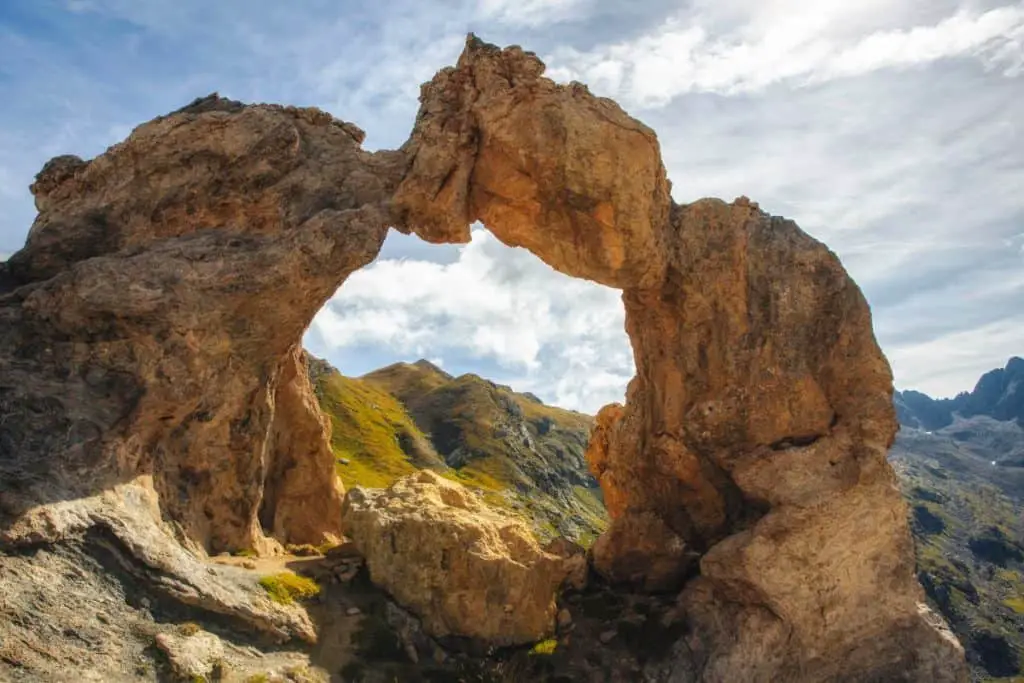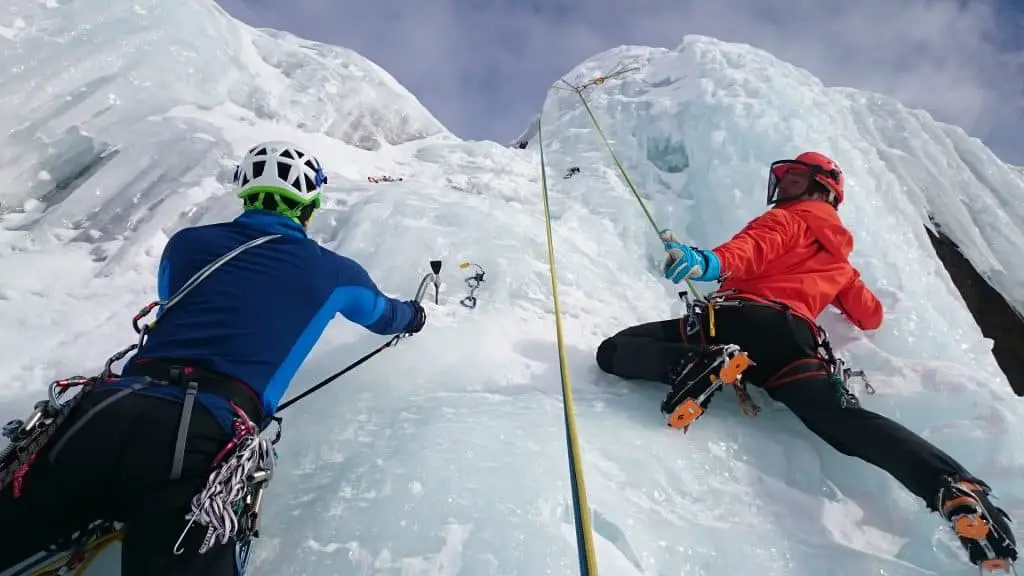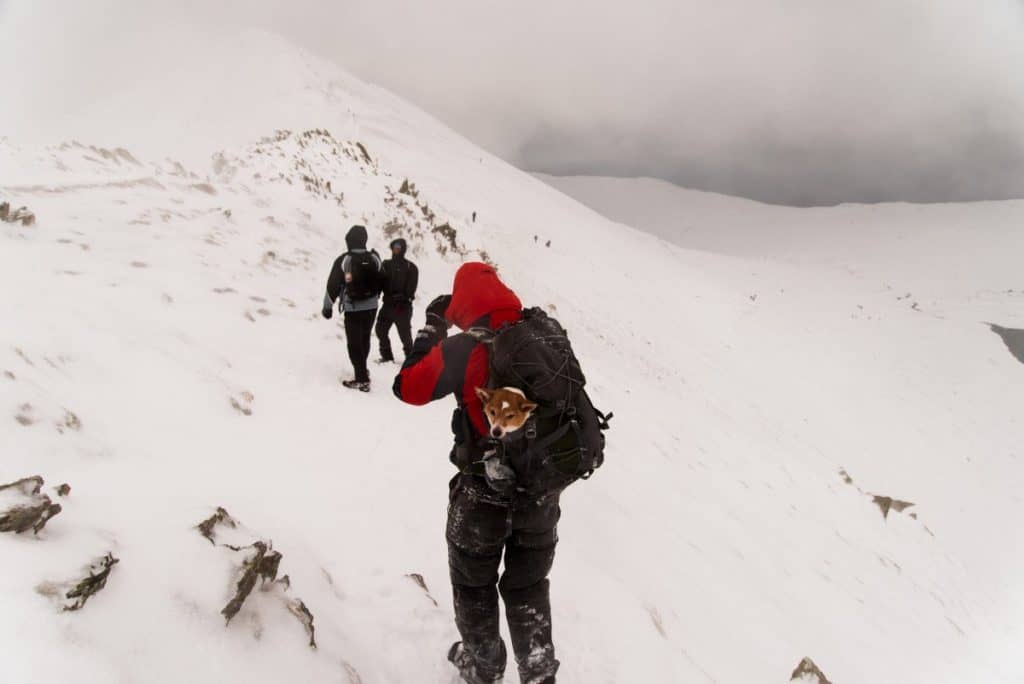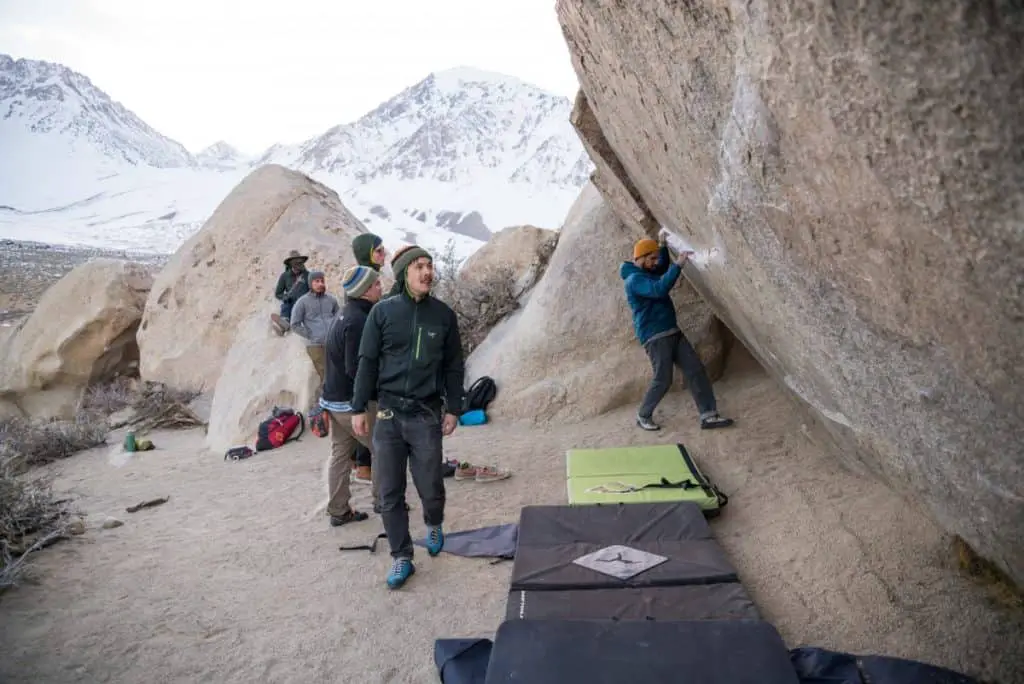
Rock climbing is an excellent sport both for fitness and enjoyment. You gain strength, balance, and reap the rewards of views usually reserved for birdlife along with the contentment of having defeated a mighty structure. But does that mean you should climb any day and at any time? No! While it may be fun, rock climbing comes various risks as well. One risk factor is the weather. If you climb during unsuitable weather, you may put your life in danger due to the risk of falling.
So, what is the best weather for rock climbing? The weather associated with fall (aka Autumn) is best for general rock climbing. It shouldn’t be rainy; the weather should be sunny or cloudy. Rain can make the rocks slippery and hinder the process of climbing, no matter your experience. However, sunny doesn’t mean extremely hot temperatures. If it’s too hot, you’ll sweat a lot and your hands won’t be able to grip effectively. The temperatures should be cooler if possible, typically below 70°F, to minimize sweating and increase friction between the hands and the rocks.
Page Jumps
- The Best Weather for Rock Climbing With Ropes
- The Best Weather and Temperature for Bouldering
- The Best Weather and Temperature for Ice Climbing
- Best Weather and Temperature for Mountaineering/Alpinism
- How to Boulder or Rock Climb Safely in Any Weather
- Is It Bad to Climb in Weather That’s Too Hot?
- Is It Bad to Climb in Weather That’s Too Cold?
- What Equipment to Take with you if You’re Bouldering in Winter
- Rock Climbing Techniques for Different Weather Conditions
The Best Weather for Rock Climbing With Ropes
The best weather for rock climbing with ropes (sport climbing, top rope climbing and trad climbing) is determined by the following factors: whether the cliff in the shade or sun, whether the area humid or dry or whether its summer or winter? Low temperatures are suitable for rock climbing using ropes. Rock climbers often covet low temperatures since there’s more friction in the cold, which gives them a better grip on the ropes and shoes compared to warm temperatures. Your body will also lose less water, reducing the need to rehydrate as frequently. Also, you won’t get sunburnt during lower temperatures. The best temperature for rock climbing with ropes is between 32°F and 80°F, which makes fall and some parts of spring the best time.
The Best Weather and Temperature for Bouldering
For maximum fun and potential when bouldering, you need lots of friction. This means that you need cold rock and the least amount of moisture, sweat, and hand grease on your hands. Bouldering is not ideal during the hot summer sun because, again, you’ll be sweating a lot, and the surface will be very slippery. The hot summer sun also increases the rate of exhaustion and dehydration. Fall is the best time for bouldering, and spring coming in as the best alternative weather to fall. The best temperature for bouldering is generally cooler than roped climbing. This is because lower and intermediate grades when roped climbing do not require as much friction considered to bouldering. Temperatures between 32°F and 50°F are the most ideal when bouldering, however anything up to 80°F shouldn’t affect you too much.
If you want to know more about bouldering, I’ve included pretty much everything in my bouldering 101 article.
The Best Weather and Temperature for Ice Climbing

Any weather with freezing temperatures is ideal for ice climbing. Ice climbing in temperatures closer to 30°F or more is precarious because of the melting and unstable icefalls. When it comes to ice climbing, it’s best to climb in temperatures lower than 2°F, but you’ll need lots of layers to keep you warm. Also, remember that too many layers restrict mobility and add weight. Most ice climbers prefer climbing in the dead of winter. This is when icefalls have completely solidified and thickened, reducing the probability of breakage.
I’ve written a very detailed article about ice climbing, including what is it, the basics, where you can practise it and what gear you’ll need.
Best Weather and Temperature for Mountaineering/Alpinism

Just like ice climbing, practicing alpinism when temperatures are above freezing point exposes you to dripping ice and other dangerous conditions. That’s why alpinism is generally practiced in freezing temperatures. Alpinism needs temperatures that are stable enough to hold the ice in place so that you don’t fall accidentally. However, it shouldn’t be too cold to prevent the risk of hypothermia. According to a study published on NCBI, weather, especially extremely cold weather, is a crucial factor in mortality rates. Climbers are prone to die from hypothermia if they don’t take the right safety measures.
Therefore, for your own safety, mountaineering needs temperatures sustainable by the human body. The best weather for mountaineering is during summer when the weather is friendly, and the temperatures are not extreme. And if you feel the weather isn’t that friendly, take the necessary precautions.
How to Boulder or Rock Climb Safely in Any Weather
Staying safe when rock climbing is crucial and climbing safety depends on your own judgment. Sometimes, weather conditions will be against your expectations, that’s why understanding the severity of the weather condition and making the correct decision is vital. According to ScienceDirect, when the weather gets bad, climbers start rushing and hurrying. This is more likely to cause accidents than the weather itself. Therefore, being aware of changing weather can mean a lot to your safety – you won’t need to rush to get away from the stormy weather.
Another thing is that you wear appropriate clothes and equipment before venturing on any climbing expedition. And don’t forget to prepare for your climb in advance, and have tips on how to deal with unexpected bad weather. Just like exposure, recognizing symptoms of hypothermia means the difference between staying alive and dying on the rocks or ice. Falling rocks have caused a significant number of injuries and deaths and, even though they can’t be predicted, you can avoid them by staying away from hazardous terrains.
As a climber, you should also pay attention to the wind speed, the probability of rain or snow, and the forecasted lows and highs before planning any rock climbing adventure. If you adhere to these tips, you’ll be more likely to return home safe and sound.
Is It Bad to Climb in Weather That’s Too Hot?
The challenges of running, climbing, and hillwalking in severe summer conditions are undeniable. Climbing in weather that’s too hot exposes you to many risks. These include sunburns, dehydration, heat exhaustion, and even heat stroke. Mild dehydration is very common, but in severe cases, dehydration can result in brain damage, seizures, or even death.
Heatstroke is another severe threat of climbing in scorching weather. Heatstroke occurs when your body is no longer able to cool itself. Once your body temperature goes beyond 40°C, the cells are damaged, and your body organs suffer. Climbing in weather that’s too hot impairs your eyesight, and performance, and you won’t know when it’s safe to push harder or when to stop and throttle back.
Is It Bad to Climb in Weather That’s Too Cold?
Cold weather opens the door to the best climbing experiences. As a climber, exploring your climbing adventures during the cold weather gives you many advantages. However, climbing in extremely cold conditions is very risky. If the weather is too cold, you cannot comfortably cling on your rope or hang on the rock.
The rubber in your shoes will be harder, making it more difficult to mold to the shape of the rock you’re stepping on. Even if you’re wearing clothes that keep you warm enough, the rope will numb your hands, which will make climbing very challenging and risky. You’ll also need to wear lots of clothes and gear to keep you warm; these will not only make you heavy but also reduce your range of mobility.
What Equipment to Take with you if You’re Bouldering in Winter

We’ve discussed the advantages of bouldering in winter, but what’s needed to keep you warm during this period? Don’t forget, bouldering is about having fun. Having better equipment means more fun and harder sends.
Bouldering doesn’t rely on ropes for protection. Instead, it relies on crash pads to protect climbers when falling. Think of packing climbing shoes, a climbing brush, chalk and a chalk bag/bucket, high-quality crash pads, at least two t-shirts, a vest, an insulated jacket, gloves/mitts, and warm socks. Ensure that your clothes absorb sweat, give you the right level of warmth, and are well ventilated. Avoid wearing cotton clothes as they become cold and heavy when wet.
You’ll also need a flask for keeping hot drinks, and some extra food. Sunglasses and trekking poles are also recommended for amateurs. If you’re planning to carry your smartphone or any other electronic gadget, ensure that you carry re-sealable plastic bags to keep your equipment dry.
Rock Climbing Techniques for Different Weather Conditions
Experienced climbers don’t use loads of energy to power their way up rocks. Instead, they use different moves and techniques to overcome various types of challenges. When you have the right skills and technical ability, moves will start clicking, and you’ll eventually find yourself on top of the most challenging terrains. Below are some techniques to help you when rock climbing with ropes in any weather.
- Keep your arms straight – When hanging using your rope, keep your body weight on your skeleton rather than trying to flex them. This will help your arm muscles rest rather than being engaged throughout the climbing period.
- Climb using your feet – Despite being the most important skill, most beginners overlook this technique when rock climbing. The lower body is usually stronger than the upper body; that’s why you should always keep your weight on your feet when rock.
- Resting – Having enough rest is perhaps as useful as any other skill in climbing. When doing long routes, you can occasionally rest by dropping one or both arms. You can also use the opportunity to relax your muscles by stretching and shaking your hands.
- Maintain quiet feet – Occasionally, climbers get scared, which makes them hurry. This makes them scrap around and waste lots of energy while trying to find holds. Attempt climbing rocks while keeping your feet are quiet as you can to reduce tension and anxiety.
- Engage your core – You need a strong core to achieve the best stability and balance on rocks. Work on strengthening your core since its good for rock climbing.
- Positive self-talk – A positive self-talk is a vital mental component when rock climbing using ropes. Pay attention to your thoughts when climbing. If you identify fear as a significant factor, learn to think positively about your safety and achievements at the end of the day. Rock climbing can teach you lots of life lessons if you’re willing to learn.
- Breathe – Always take deep breathes when taking each step to avoid instances of making your body shake when climbing. Trembling and anxiety are also caused by insufficient oxygen in your body. Breathing regularly also calms the mind and keeps you focused.
If you were wondering about the best weather for bouldering, rock climbing, ice climbing, mountaineering, I hope this article has given you enough information. Remember, being aware of how various weather conditions impact rock climbing will not only make the activity fun, but also ensure your safety.
